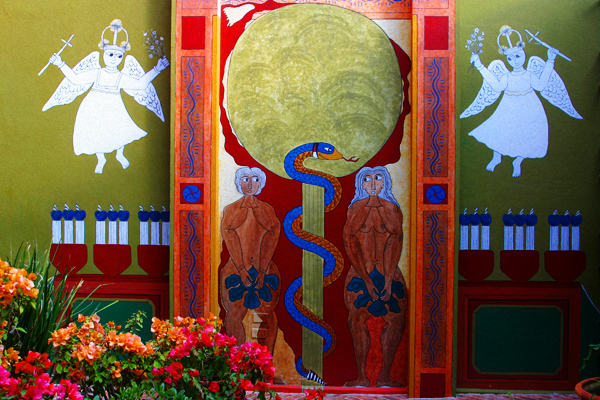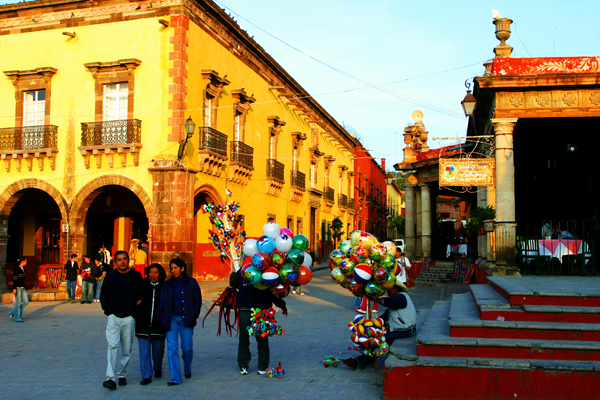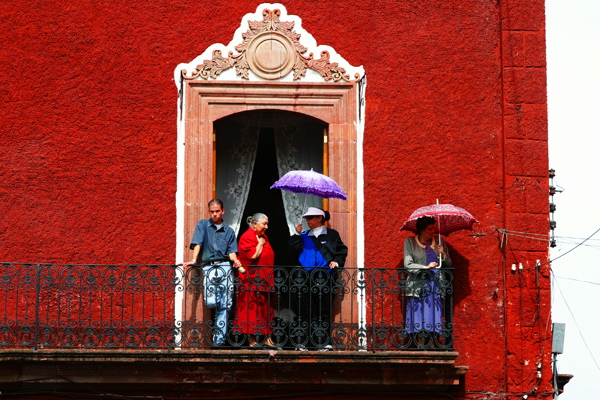If you are going to stay in a town like San Miguel for awhile, you tell yourself that you’re going to stay away from other Americans and drink only in the bars where there are no tourists and eat in restaurants where there are no menus and the owner does not greet you in English, but then a day comes when you’re feeling out of sorts and long for the familiar rather than the exotic and so you go and have a drink at a place like Harry Bissett’s.
That’s what I did Saturday evening. I think it was Carol Romano that told me about Harry’s. Carol owns a little shop down the street from where I live. It used to be called Tribal Imports but then 9/11 happened and she renamed it Insh’ala Imports. She sells kilims and cushions and ceramics—that sort of thing—mostly from Morocco. She’s a graphic designer from San Francisco who says she woke up one morning “and realized what a perfectly miserable little life I’d built for myself.”
So she moved to San Miguel some 14 years ago. There are a lot of Carol Romano’s in San Miguel. It’s a very matriarchal town. Anyway, I wandered into Insh’ala Saturday morning, mostly because I had passed it by a dozen times and still had no idea what it was, and there was Carol and we got to talking and she told me that if I was around, I might want to have a drink with her and some of her friends at Harry’s later that night.
So here I am. But there’s no Carol. Possibly because it’s still a bit early. There’s a young woman sitting at the bar with a red-faced man who is very boisterous. They’re both drinking martinis although the man is drinking them a lot faster than the woman. He asks her, in a voice loud enough for everyone to hear, why she has come to San Miguel by herself if she is married. “Trouble back home?” he says with a smile and a wink.
The woman says she often travels by herself because her husband, Golden, refuses to fly.
The red-faced man laughs and says, “Shit. Did you marry a sissy?”
Then he put his arm around the woman’s shoulder and says to anyone who is listening, which is pretty much everyone in the bar, “She married a sissy. She married a man named Golden—what the fuck kind of a name is that?—and Golden is afraid to fly for chrissakes.”
Just then Carol walked in the door along with a middle-aged couple. They came over and we got the introductions out of the way. We moved to a table in the back of the bar and everyone ordered a martini (during happy hour, the drinks come in pairs). I told them about the couple at the bar. Carol said the guy was a real asshole. “He’s got a wife and two kids back in Dallas and supposedly his wife sent him here to dry out and get his act together. Obviously it’s not going too well.”
Our drinks came and then Carol ordered some salvavidas—ringlets of calamari and oyster poboys. It seemed odd to be in San Miguel in a bar named Harry’s drinking martinis and eating oyster poboys on a Saturday night but I can’t say it was an unpleasant experience.






Recent Comments